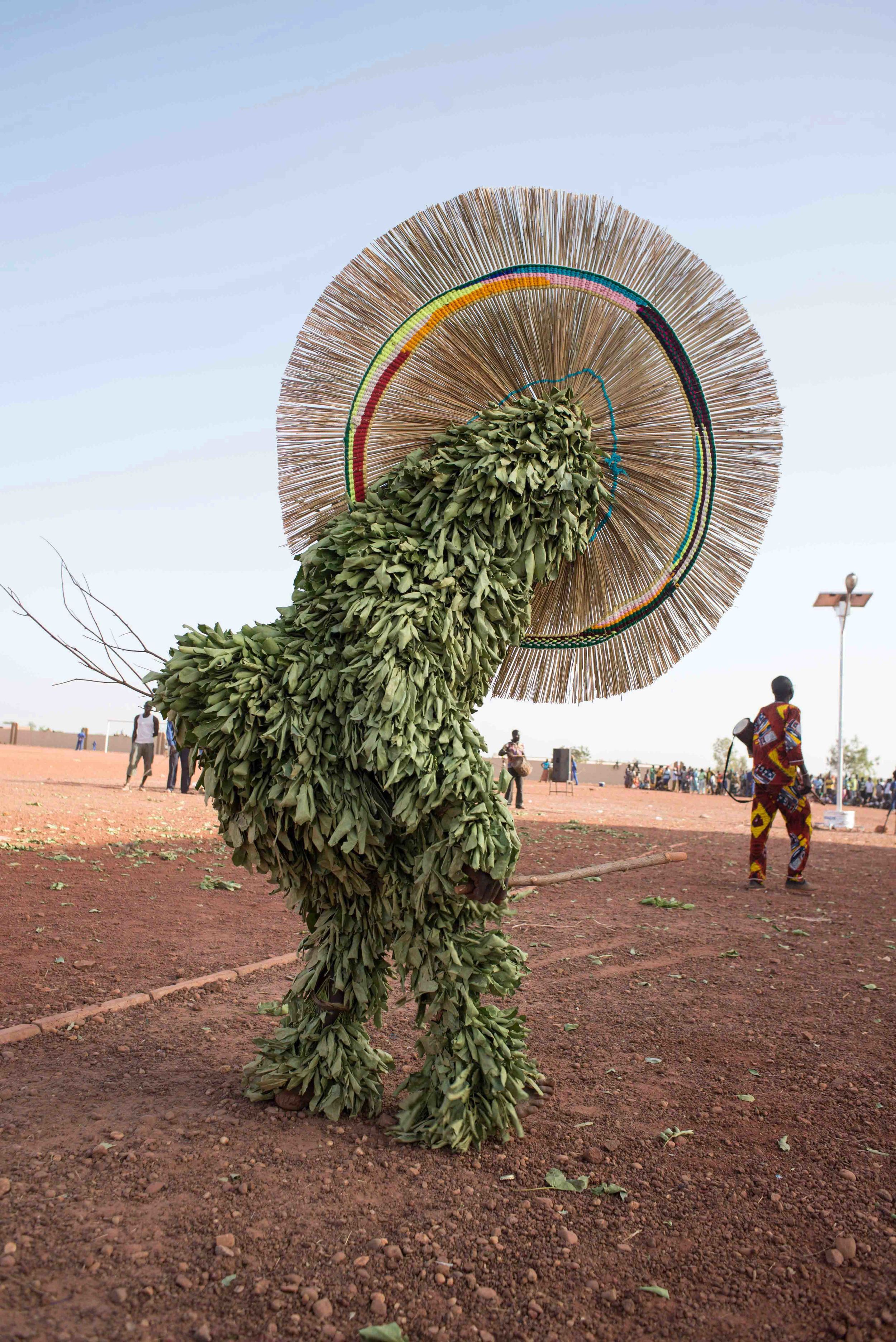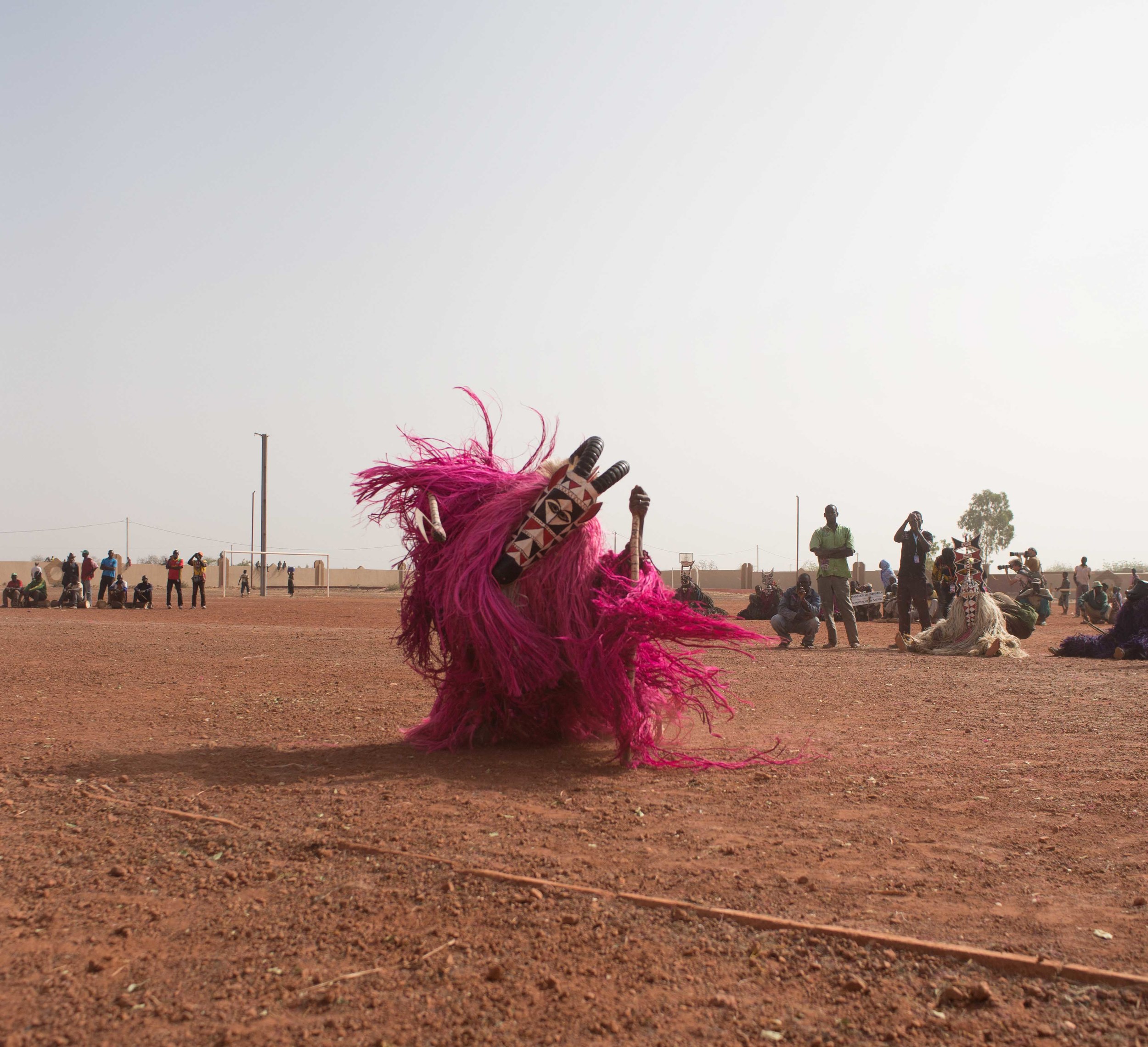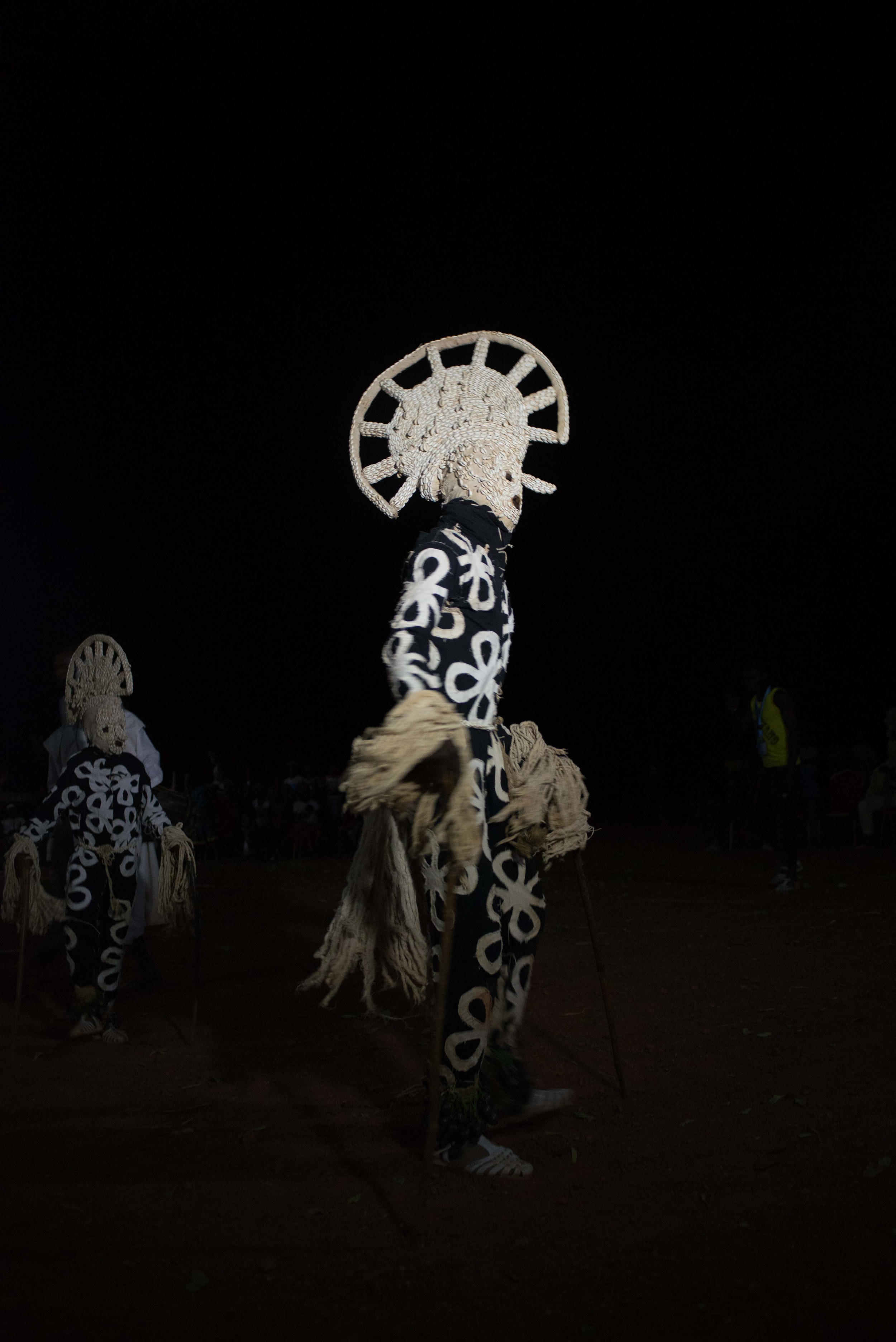Burkina Faso, like many African countries, is a place of extremes. Omnipresent and ever-multiplying cell phone towers out in the bush belie the lack of clean drinking water. A sophisticated understanding of how the malaria parasite affects the body and a complete reliance on the magical curing powers of boiled leaves for treatment go hand in hand. A western style democracy and parliament still relies on the wisdom of the Naba or traditional chief, to help govern. All that is to say that no matter how quickly Burkina moves in the direction of western-defined, new age ‘modernity,’ they hold very tightly to aspects of their culture that predate colonialism.
One tradition for which Africa in general is perhaps best known is the appearance of masks during different events or distinct times of the year. Although masks are found throughout Africa from Mali to Zimbabwe, the way they function, appear, and what they represent varies greatly. Even within Burkina Faso, two neighboring villages can have completely distinct masks with difference behaviors associated with them. In Burkina Faso at least, ‘masks’ is a loosely used term. The costumed spirits that appear in villages, at funerals and in the height of hot season are not always clad in actual masks. Sometimes they are covered in local leaves or wrapped in fabric or reeds. Sometimes they take human form and sometimes they look like they have just accidentally crash landed on earth from some far away galaxy. Sometimes they dance by gyrating or shaking or spinning, sometimes they ignore onlookers and sometimes they chase, hit or embrace them.
The few times I have asked Burkinabe about masks, there seems to be some kind of cognitive dissonance associated with how they fit into Burkinabe culture. There is no notion or mention of the young men that live inside the costumes, even though sometimes you can see their basketball shorts peaking out from between the grass skirts. There is no notion of controlling or limiting where the masks can go or what they are allowed to do, even though I have witnessed some masks injure children (though not badly). There is a fear and a wonder associated with the appearance of masks, and all Burkinabe, whether educated or not, flock to see them when they begin to dance.
In Burkina Faso, masks appear in the Western region in the Spring, generally between March and May. Every two years there is a masks festival in Dedougou, a larger Burkinabe town near Solenzo, where masks from all of over Burkina Faso, Benin, Togo, Mali and Senegal dance throughout the day and night in a giant stadium. Solenzo boasts a particularly menacing brand of masks. They usually come out in mid-May for about a week or so, and from 4pm to about 5:30 they terrorize the town with a band of young men and noisy instruments. Solenzo’s masks resemble faceless, freshly cut, angry Christmas trees. They are covered in local leaves held together with chords that make something of a plume on the top, and they carry with them long switches for hitting people. For this reason, they command more fear than wonder. I was visiting a friend during mask time and the length of our conversation found me biking home at night. Having heard that the masks were out that night, my friend hopped on her moped and said she’d escort me home to protect me. This has happened more than once.
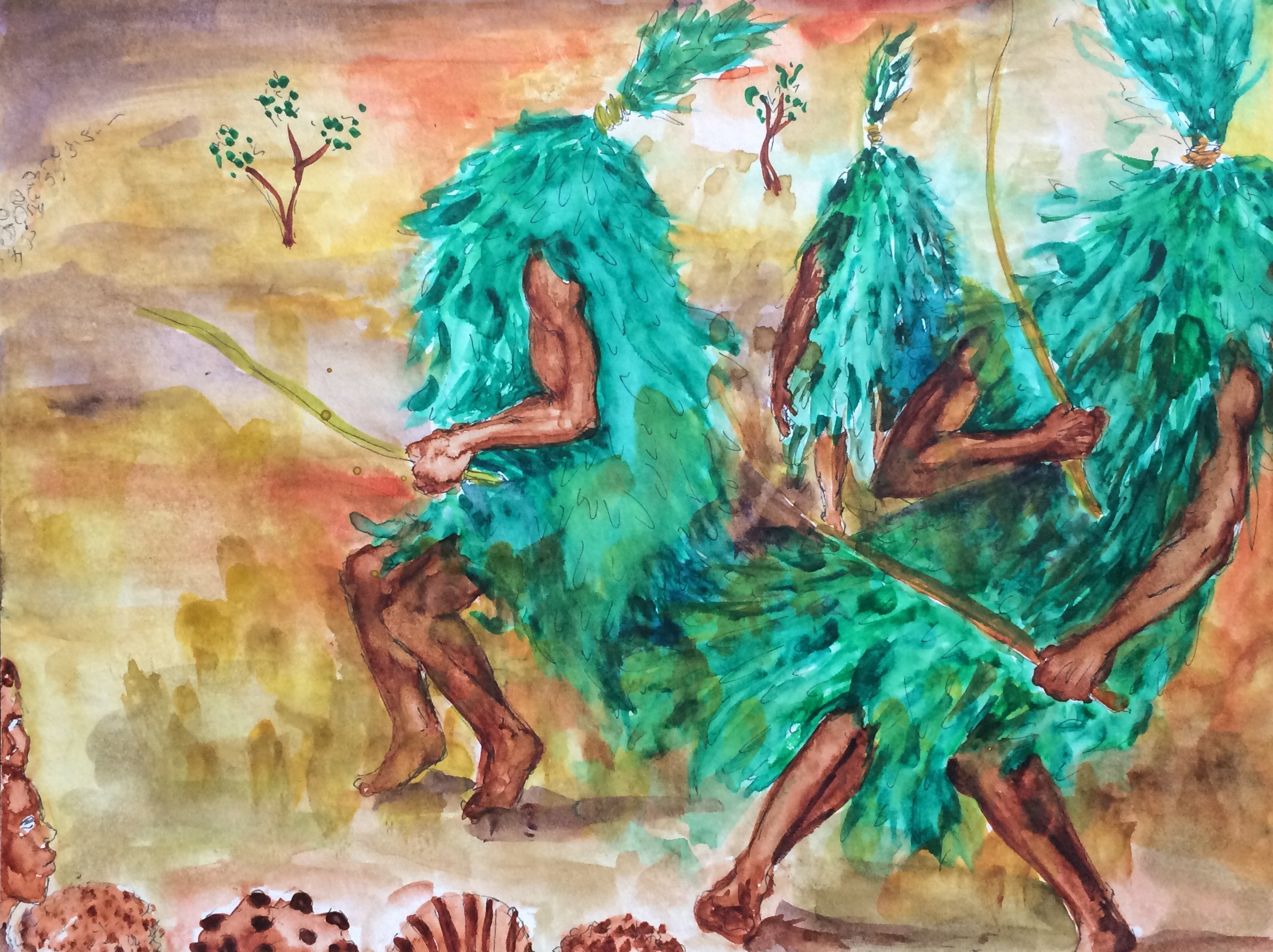
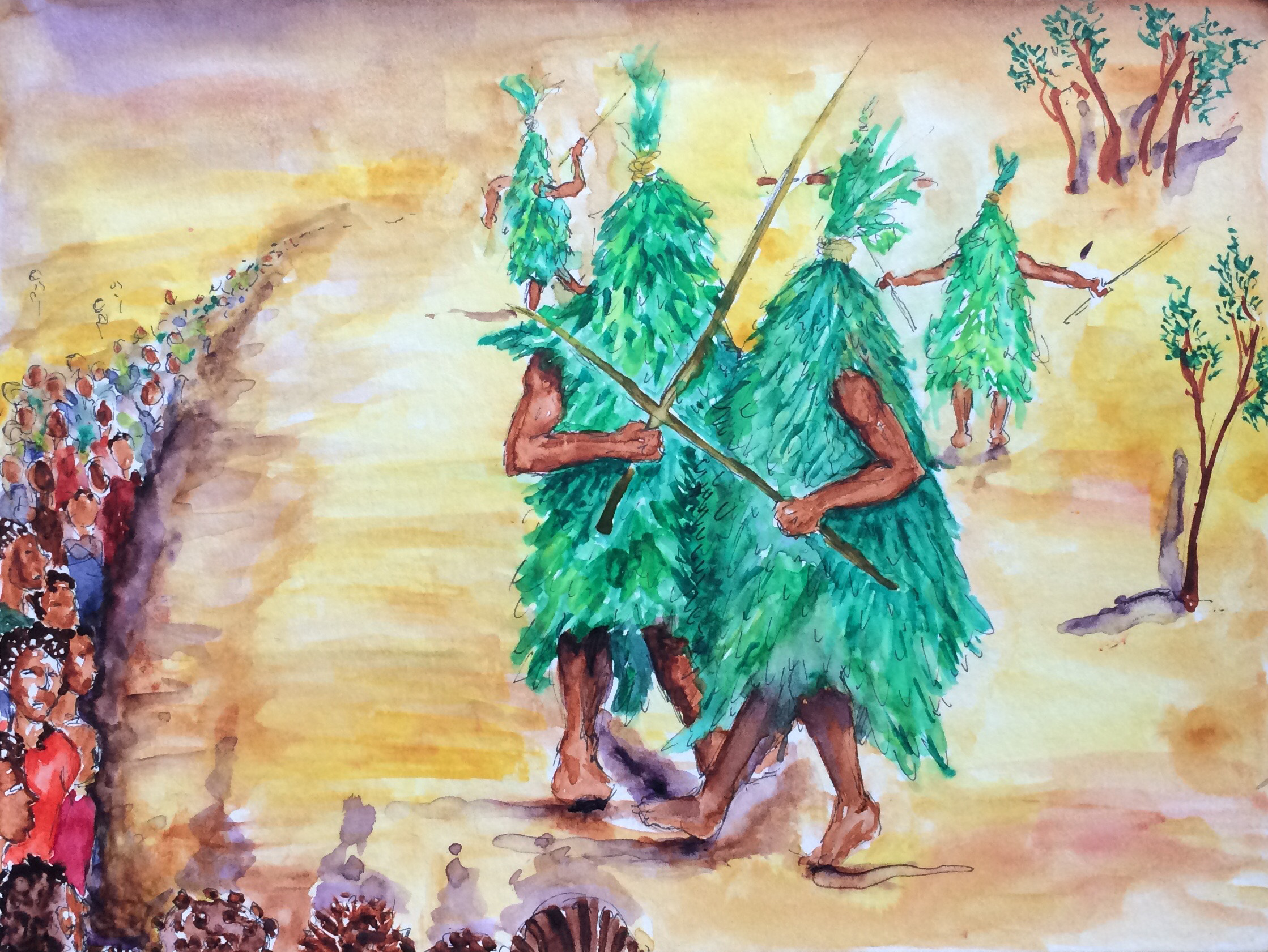
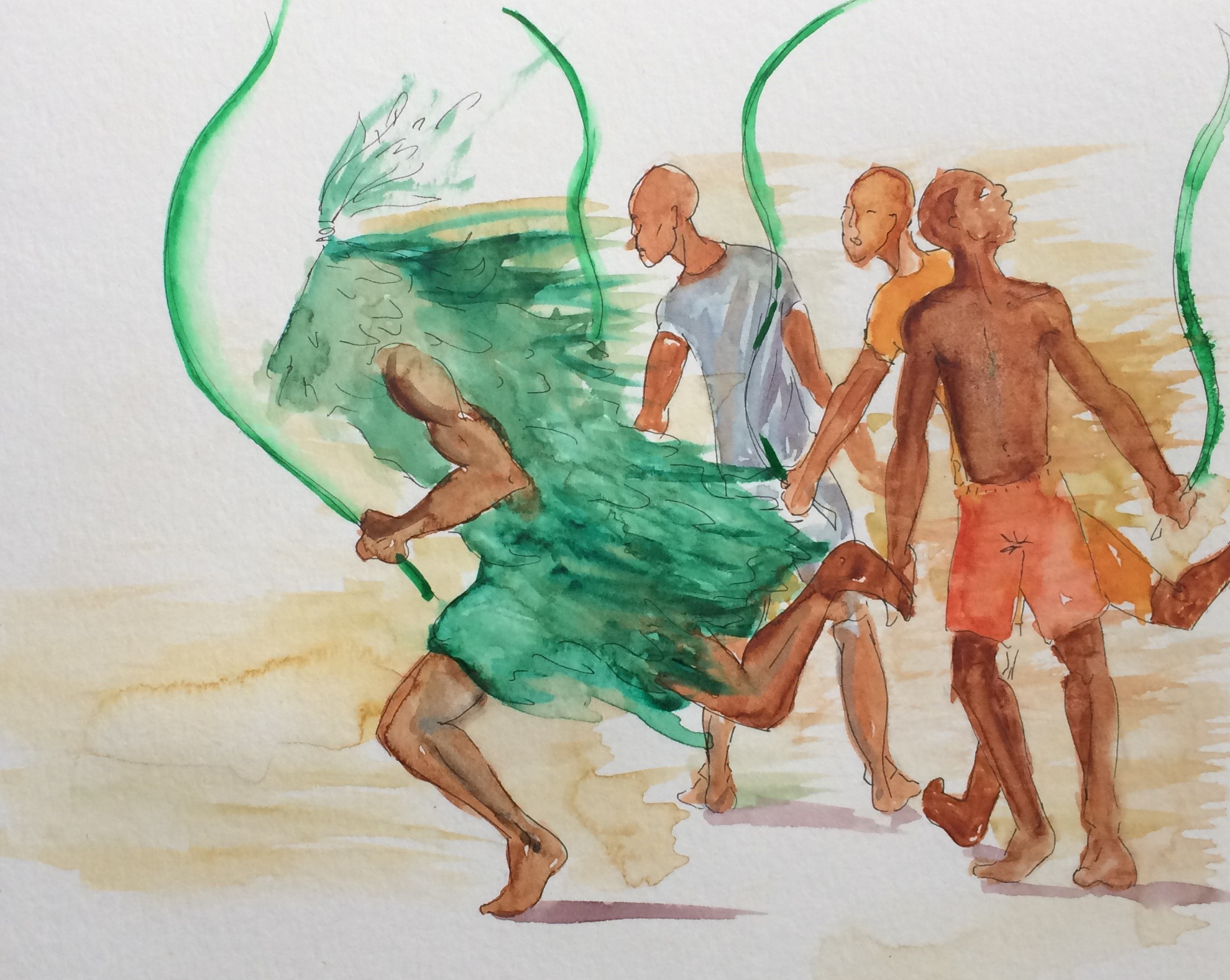
During mask time, certain men in the community will also carry switches, suddenly drunk on the ability to chase their screaming family members and friends around Solenzo and threaten them with the flick of the wrist. This is always done in jest, of course, and though they do sometimes actually hit people it I’ve never seen anyone hurt. Meanwhile, the masks do laps around the town with their young escorts, stopping in a central location to dance and fling their own switches. Crowds of people trip over each other in an effort to get away from them when they charge, and occasionally parents will hand a young, screaming child to a mask to terrorize. This year, crammed between numerous Burkinabe while watching the masks dance, I am struck once again by the contrasts found within almost every aspect of Burkinabe culture: Laughter and screams mélange with the cries of distraught children, just as the men, women and children that surround me are both trying to protect me and use me as a human shield. Despite the fact that I can occasionally see one of the masks adjusting his leaves so he can see where he is charging, seeing masks has always filled me with energy. There is something pretty incredible and humbling about witnessing a tradition that has outlived wars, famine, colonialization, slavery, and Westernization.

